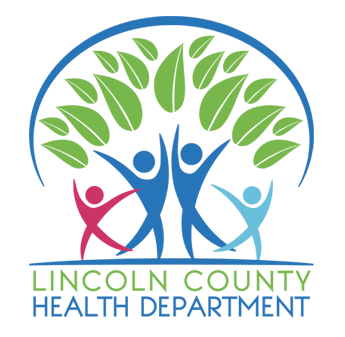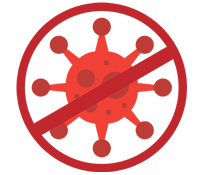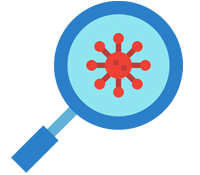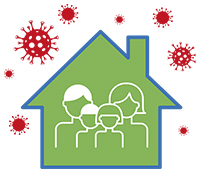Quarantine and Isolation
Quarantine and isolation are important public health interventions that slow the spread of COVID-19 by preventing exposure to people who have, or are more likely to have, this contagious disease.
Quarantine
What is quarantine?
Quarantine keeps someone who might have been exposed to a contagious disease away from others and monitors them to see if they become sick. Quarantine helps prevent the spread of disease that can occur before a person knows they are sick or if they are infected without feeling symptoms. A person who is identified as a close contact of someone who tests positive for COVID-19 will be asked to quarantine.
People in quarantine should stay home, separate themselves from others, monitor their health, and follow directions from their state or local health department.
How do I quarantine?
If you have been in close contact with someone who has COVID-19, you may be infected even if you don’t currently have symptoms. You should quarantine to protect your family, friends and community.
DO:
- Stay home except to get medical care. If you have other health conditions, closely monitor any new or existing symptoms and check-in with your healthcare provider.
- Wear a mask when around others, including others in your household.
- Stay away from people who are at higher risk for getting very sick from COVID-19, including people age 65 years or older and those with a chronic disease or weakened immune system.
- Use a separate bathroom if available. If not possible, clean and disinfect the bathroom after each use.
- Wash your hands often and thoroughly.
- Wipe down surfaces that you touch frequently.
- Get some fresh air. Open windows for ventilation or take a walk outside where you will not be in contact with other people.
- Monitor your health: Symptoms may appear 2-14 days after exposure to the virus.
Symptoms of COVID-19 may include:- Fever or chills
- Cough
- Shortness of breath or difficulty breathing
- Fatigue
- Muscle or body aches
- Headache
- New loss of taste or smell
- Sore throat
- Congestion or runny nose
- Nausea or vomiting
- Diarrhea
If you develop any symptoms, you should get tested.
- Call 911 if you have emergency warning signs such as difficulty breathing, pressure or pain in your chest, bluish lips or face, confused or hard to wake, or other serious symptoms.
DO NOT:
- Go to work, school or public areas
- Allow visitors
- Prepare or serve food to others
CDC quarantine scenarios are available at https://www.cdc.gov/coronavirus/2019-ncov/if-you-are-sick/quarantine.html.
When can a person be released from quarantine?
If you know you or your child are considered a close contact to a known positive, you should follow these quarantine guidelines:
- If you completed a primary series of Pfizer or Moderna within the last 6 months, J&J within the last 2 months or have received a booster dose, you should wear a mask around others for 10 days after exposure and, if possible, test on day 5.
- If you are unvaccinated or completed a primary series of Pfizer or Moderna more than 6 months ago or J&J more than 2 months ago, you should stay home for 5 days after exposure and continue to wear a mask around others for 5 additional days (days 6-10). If possible, test on day 5.
If you develop symptoms at any time, immediately obtain a test and isolate until you receive the results of that test. Symptoms may include:
- New loss of taste or smell
- Fever or chills
- Cough
- Shortness of breath or difficulty breathing
- Fatigue
- Muscle or body aches
- Headache
- Sore throat
- Congestion or runny nose
- Nausea or vomiting
Isolation
What is isolation?
A person who tests positive for COVID-19 will be asked to isolate. Isolation is used to separate people infected with a contagious disease, whether symptomatic or not, from people who are not infected.
People who are in isolation should stay home until it’s safe for them to be around others. In the home, anyone sick or infected should separate themselves from others by staying in a specific “sick room” or area and using a separate bathroom (if available).
How do I isolate?
COVID-19 is very contagious. If you have tested positive or have symptoms of COVID-19, you should isolate to prevent spreading the disease to your family, friends, and community.
- Stay home except to get medical care. If you have other health conditions, closely monitor any new or existing symptoms and check-in with your healthcare provider.
- Stay in a separate room from other household members, if possible.
- Do not allow visitors.
- Use a separate bathroom if available. If not possible, clean and disinfect the bathroom after each use.
- Avoid contact with other members of the household and pets.
- Don’t share personal household items, like cups, towels, and utensils.
- Wash your hands often and thoroughly.
- Disinfect any surfaces you touch frequently.
- If you must be in a shared space, stay at least 6 feet away from others and wear a mask. Open windows if possible.
- Monitor your symptoms. Call 911 if you have emergency warning signs such as difficulty breathing, pressure or pain in your chest, bluish lips or face, confused or hard to wake, or other serious symptoms.
CDC guidance for isolation is available at: https://www.cdc.gov/coronavirus/2019-ncov/if-you-are-sick/isolation.html.
How do I care for someone who has tested positive?
Instructions for Caregivers/Household Members:
If you are providing care for a family or household member who has been diagnosed with COVID- 19, stay home and be alert for the development of any of the following symptoms:
- Cough
- Shortness of breath
- Subjective or measured fever >100.4
- Fatigue
- Muscle or body aches
- Headache
- New loss of smell or taste
- Sore throat
- Congestion/runny nose
- Nausea/vomiting
- Diarrhea
Basic Needs
- Help your family/household member with basic home needs like mail, garbage and laundry.
- Arrange for grocery shopping, needed medications, and personal needs.
Monitor family/household member’s symptoms:
- If your family/household member gets sicker, call their healthcare provider to let them know that you are caring for someone diagnosed with COVID-19 and they are getting worse.
- If your family/household member has a medical emergency, call 911 and let the dispatcher know that you are requesting help for someone who has been diagnosed with COVID-19 and is on home isolation.
Separate yourself and other family/household members from the ill person as much as possible:
- If available, the ill person should have use of his or her own bathroom.
- Do not allow visitors in the home unless it is essential.
- Wear a facemask when in the same room with your ill family/household member.
- Do not share household items with your ill family/household member.
- Do not share dishes, drinking glasses, cups, utensils, towels, bedding or other items.
- After the patient uses household items, wash them thoroughly.
- Make sure shared spaces have good airflow. Open a window or use an air conditioner when possible.
Wear gloves and a facemask if you have contact with your ill family/household member’s blood, stool, body fluid (saliva, sputum, vomit, urine).
- Use disposable gloves and facemasks and throw out after each use. Do not reuse.
- When removing gloves and facemasks: first remove and dispose of gloves, immediately wash your hands, then remove and dispose of facemask and wash hands again.
Practice good hand hygiene:
- Wash your hands often using soap and water.
- If you are unable to use soap and water, use alcohol-based hand sanitizer.
- Do not touch your face with unwashed hands.
Cover your cough and sneezes:
- Cover your mouth with a tissue when you cough or sneeze.
- Throw used tissues in a lined trash can.
- Avoid touching your face with unwashed hands.
- Immediately wash your hands with soap and water or use alcohol-based hand sanitizer.
Clean high-touch surfaces daily
- Wear gloves when cleaning high-touch surfaces.
- High-touch surfaces include: counters, tabletops, doorknobs, bathroom fixtures, toilets, phones, keyboards, tablets, and bedside tables.
- Clean any surface that may have blood, stool, or body fluids.
- Use a household cleaning spray or wipe according to label instructions.
Wash laundry thoroughly
- Wear disposable gloves when handling soiled items and keep them away from your body.
- Immediately remove and wash clothing/bedding that has been soiled with blood, stool, or body fluids.
When can a person be released from isolation?
If you or your child has a positive COVID-19 test, you must isolate at home for 5 days from symptom onset. After 5 days, if you have no symptoms or your symptoms are resolving, you can stop isolating but must continue to wear a mask around others for 5 additional days (days 6 – 10) as you may still be contagious.




